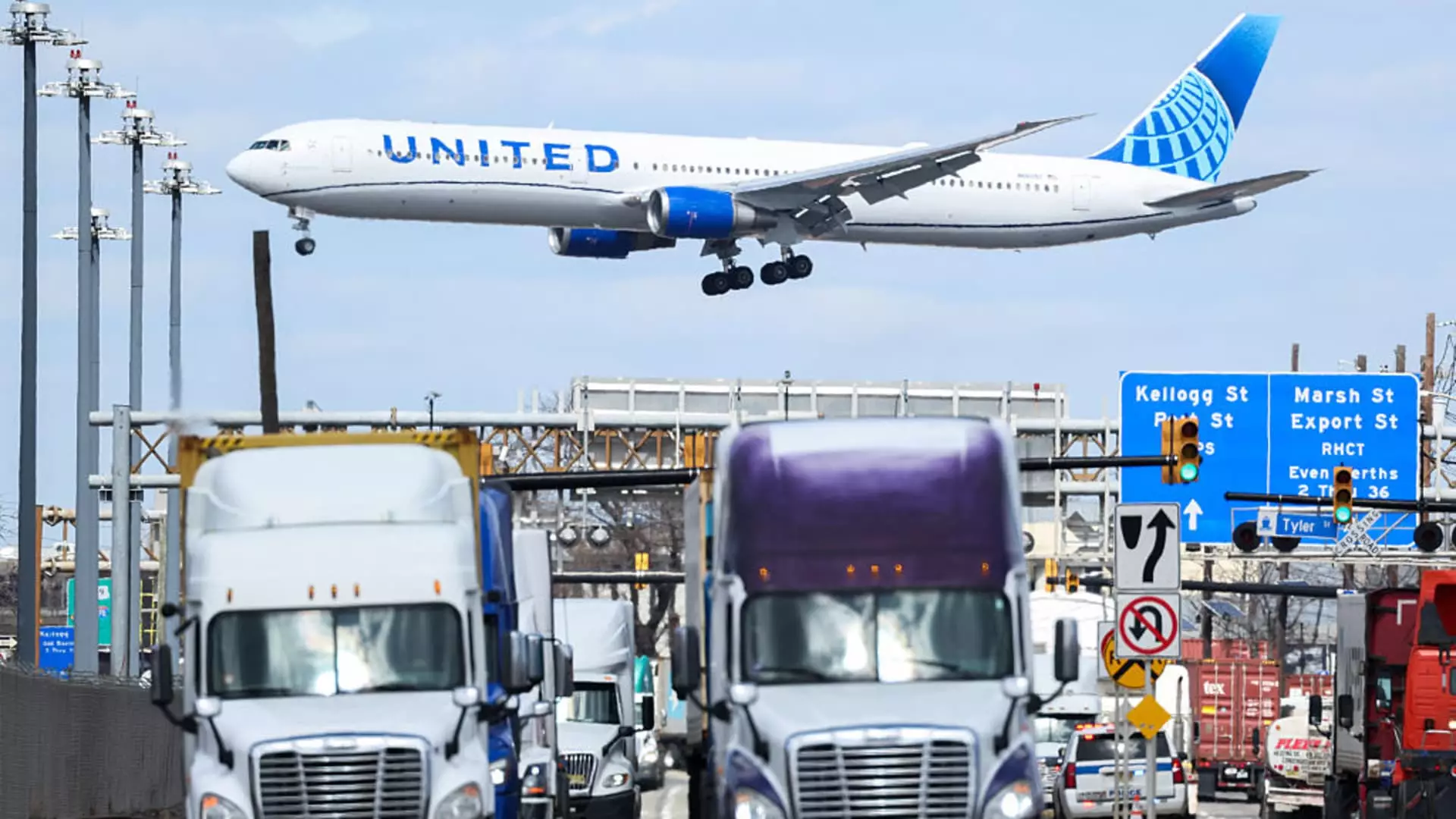United Airlines is making significant operational changes in response to shifting travel patterns. The airline’s announcement to cut domestic flight capacity by approximately 4% starting this summer highlights its proactive stance in navigating a volatile market. The current climate has revealed a clear disparity between domestic travel demand and the flourishing appetite for international trips. As travelers increasingly prioritize premium experiences, United aims to align its operations with these emerging preferences. This calculated move underscores the airline’s commitment to resilience, as it adapts to the evolving landscape of air travel.
Exceptional Profit Amidst Caution
In a remarkable turnaround, United Airlines reported a profit of $387 million for the first quarter, a stark contrast to the $124 million loss recorded in the same period last year. The adjusted earnings of 91 cents per share exceeded Wall Street’s expectations, signifying a strong recovery trajectory. This performance stems from an influx of premium-cabin bookings, showcasing United’s ability to attract higher-paying customers even in a challenging economic environment. It’s a testament to the strategic emphasis on enhancing customer experiences—transforming flights into an avenue for luxury rather than a mere mode of transportation.
The Dichotomy of Domestic and International Demand
While United Airlines thrives on international bookings, domestic routes are facing stiff competition and reduced interest, reflecting a broader trend affecting the airline industry. The 3.9% decrease in unit revenue for domestic flights compared to the previous year illustrates this struggle. In contrast, international routes enjoyed a 5% uplift, pointing to a growing consumer preference for travel experiences beyond domestic borders. This deviation highlights a crucial opportunity for United to refocus resources towards international markets, harnessing traveler willingness to spend on premium offerings while mitigating the impacts of domestic fluctuations.
Economic Clouds on the Horizon
Despite the positive earnings report, caution looms over the industry’s future. Economic uncertainty—including ongoing geopolitical tensions, potential recessions, and fluctuating consumer sentiments—poses challenges that even well-positioned carriers like United must navigate. Their decision to maintain adjusted earnings per share expectations for the full year, alongside a revised forecast in case of a downturn, reflects this strategic caution. The airline’s leadership is clearly aware of the need to remain agile, balancing growth aspirations with the prudent management of resources in uncertain times.
The Competitive Landscape and Future Outlook
As United Airlines recalibrates its approach, it faces a competitive market characterized by nimble rivals such as Delta Air Lines, which has recently refrained from reaffirming its full-year outlook amidst economic uncertainties. This competitive landscape calls for airlines to not only provide value but also to innovate their offerings continuously. United’s focus on premium travel experiences may position it favorably to adapt to changing consumer preferences while harnessing the strength of loyal, high-spending customers. In a world where the air travel paradigm is shifting, only those who remain vigilant and responsive can hope to thrive.

